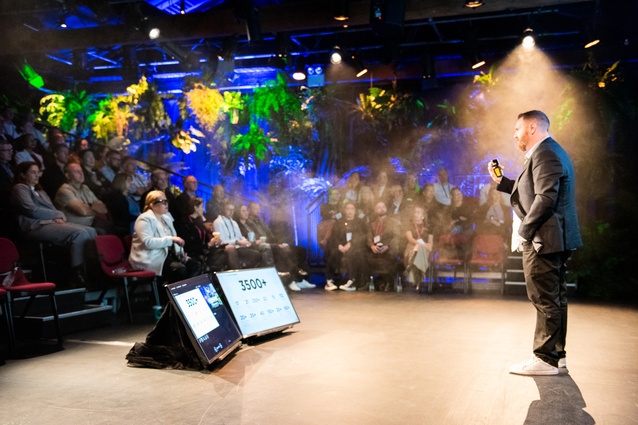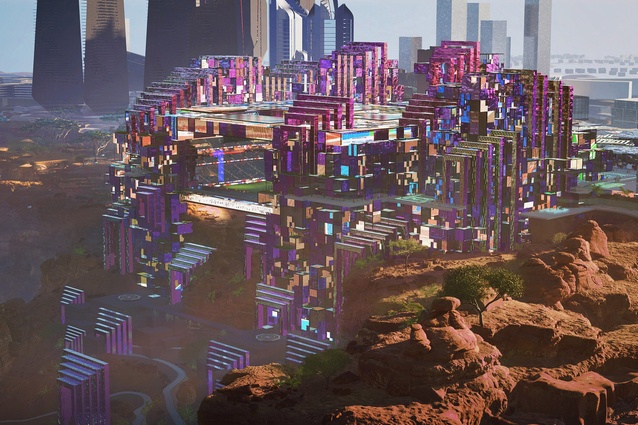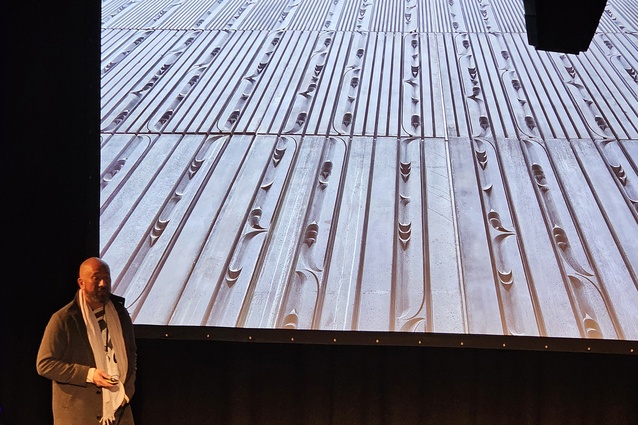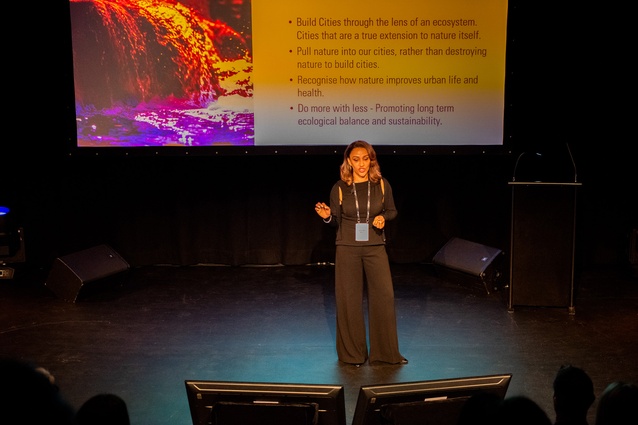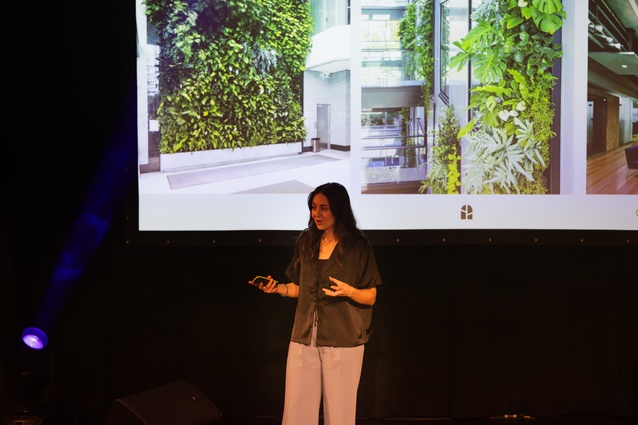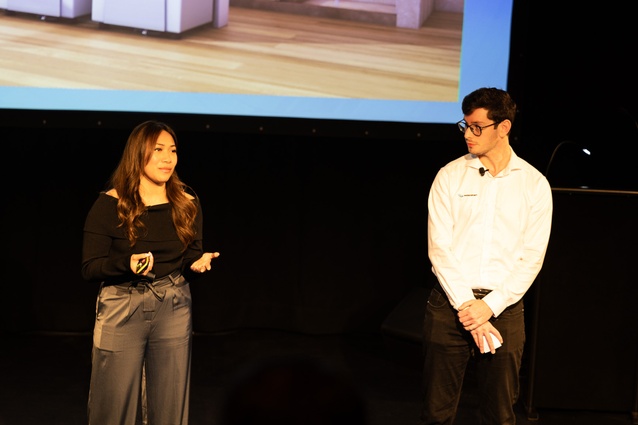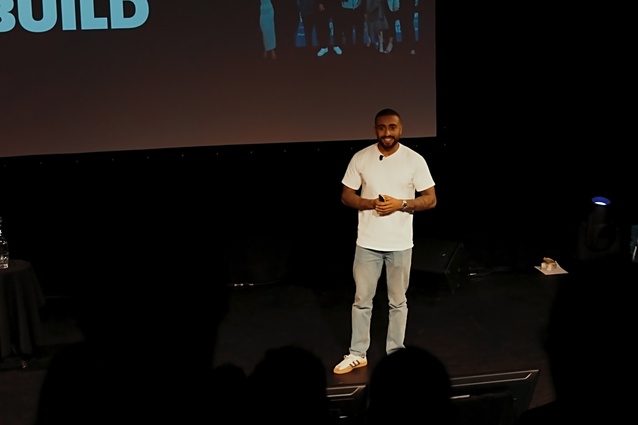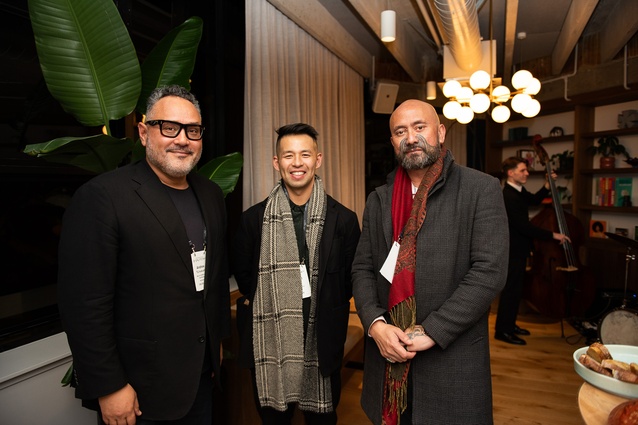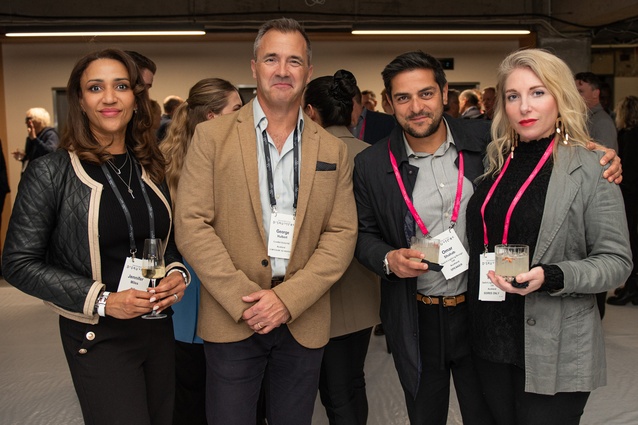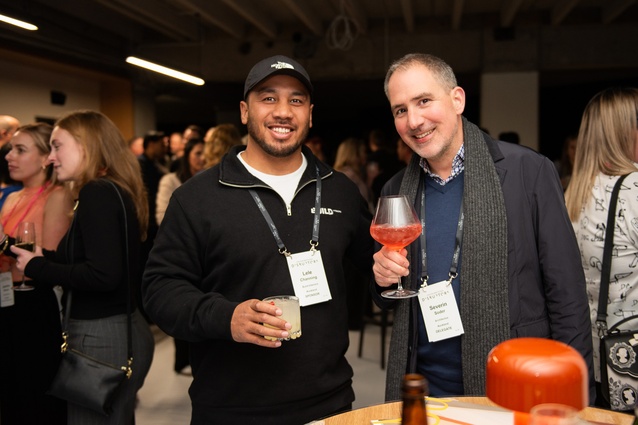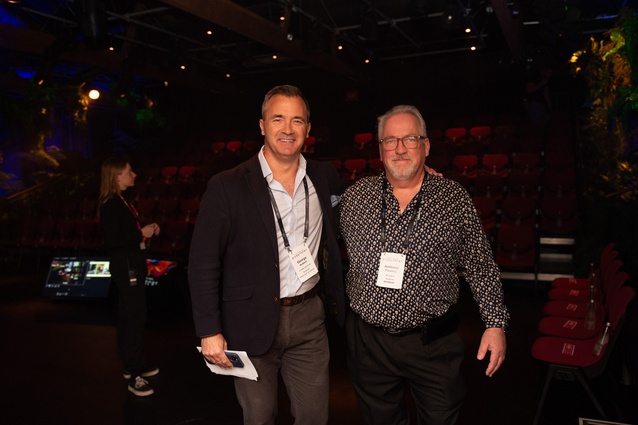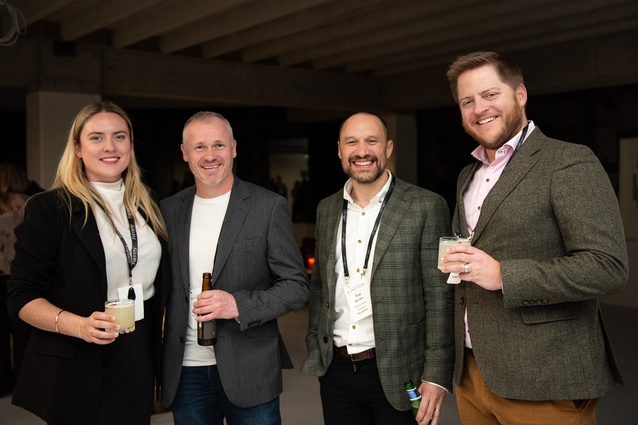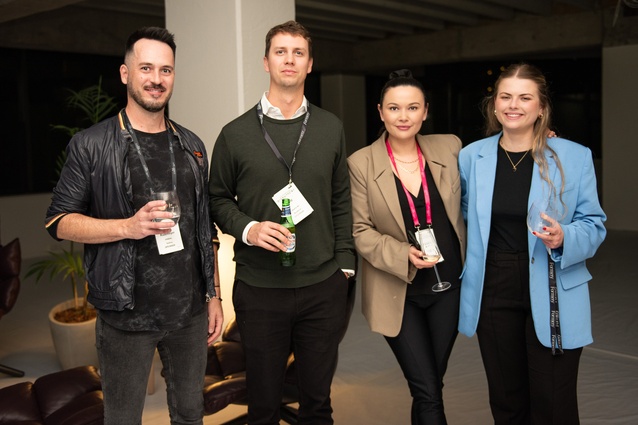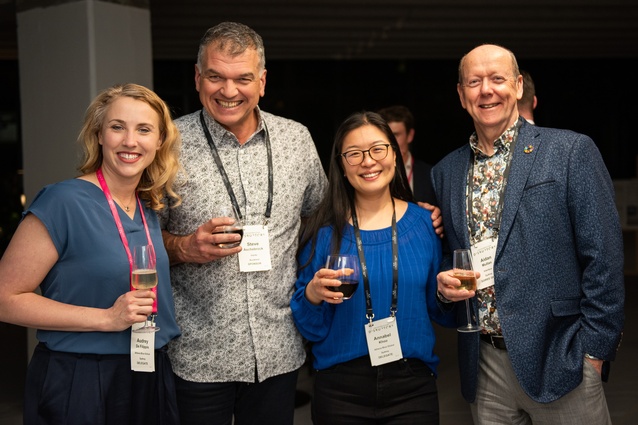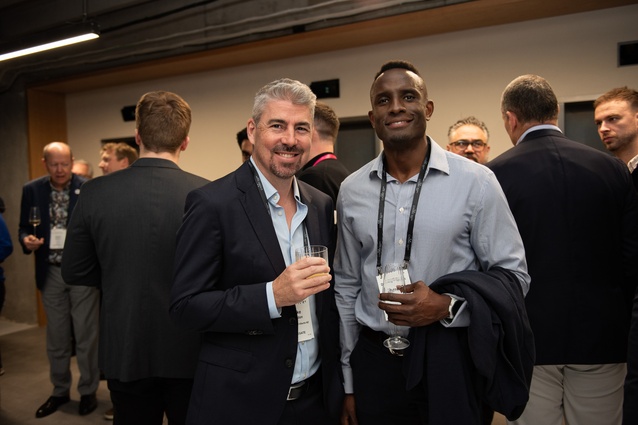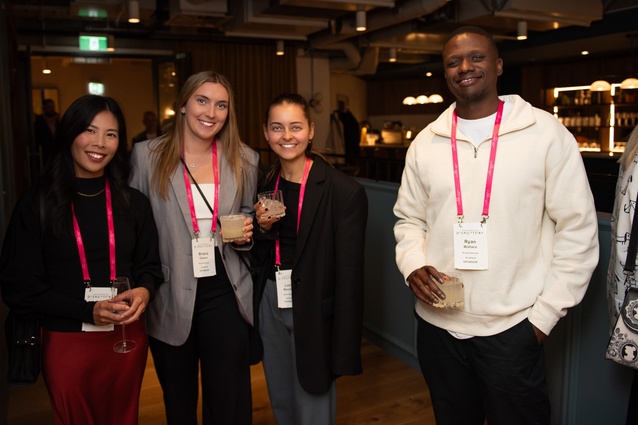Disruptive provocations at the annual CoreNet Symposium
Amanda Harkness attended this year’s CoreNet Global NZ Symposium, provocatively called ‘Unconventional Disruptors’, and found it lived up to the anticipatory hype.
At my first experience of CoreNet’s annual symposium, curated and run by a team of specialists from throughout the design sector, I thought I might learn more about the challenges facing the commercial real estate industry and how these were being addressed. Specifically, perhaps, the issue that working from home has created in terms of having to woo employees back to the workplace and how best to reinvigorate the surrounding economic ecosystem.
What was presented on 15 August went well beyond this remit, encouraged by the provocations of three visiting ideas people from across the Tasman – James Pearce from Populous, Emile Rademayer from Vandal and David Engwicht from Creative Communities.
Design firm Populous builds stadiums – big ones and all around the world – and it keeps getting better at it by all accounts. These stadiums now take on a life of their own, housing hospitality, retail and even residential in addition to the ubiquitous sports arena and seating for up to 150,000 pax. One of the practice’s latest projects, for Prince Mohammed Bin Salman in Saudi Arabia, looks like Minecraft on steroids, a futuristic multi-coloured monument set to be built atop a 200m-high cliff overlooking the city of Qiddiya. With a combined retractable pitch, roof and LED wall, it will be able to transform (like a Transformer) into different event modes in a matter of hours.

Populous also builds e-sports arenas, where audiences sit watching others sitting gaming, and now it is creating virtual stadia and training centres for gaming giants like Fortnite. Where the physical stadia have all kinds of outlets for spectating, gaming, meeting and mingling, their digital counterparts are housed within the online game and are essentially a digitally hosted version of a physical space… only here, you can skydive to the front door if you like to make an entrance.
Bringing us back to the physical, Pearce enthused about the power of spatial AI – data-driven venue optimisation with Dall-G – to provide architects and developers with insights and impacts. Spatial AI essentially powers the game-changing Sphere in Las Vegas, where architecture transforms, responds and interacts with its environment every second. You only need to plug in a USB stick and you’re away.
After trying to get our heads around drone racing and the real-time transfer of holographic images onto the pitch, enter, stage left (we were at Q Theatre), Emile Rademayer from Vandal, who seemed intent on pitching the Metaverse to us. Having watched it go from boom potential to bust, I’d imagined that both it and its creator might fizzle away into the ether but Rademayer remains bullish.
He pointed out that in 1943, IBM’s chairman had thought the world would only need five computers; not long after, 20th Century Fox’s co-founder had forecast television wouldn’t last six months because people would tire of staring at a box; and later, Blockbuster’s CEO said Netflix, on its launch, wasn’t even on the radar to be competition. Not to mention the mobile phone doubters, the internet skeptics… the list went on, as Rademayer made his case for not dismissing the Metaverse. When globe-trotting ambassador of anything and everything Snoop Dogg recently bought digital real estate in The Sandbox, some risk-seeking potential property flipper bought the adjacent piece of ‘land’ for US$450,000. And then there were the NFTs that sold for outrageous amounts – US$1.7 million for a grey pixel, US$7.5 million for Cryptopunk5822, which resold for US$24 million… the list went on. So, perhaps we’d be wise to keep an open mind after all.
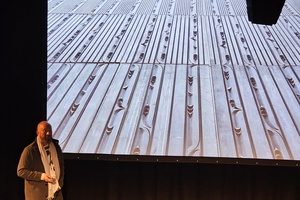
In contrast to these two Australian soothsayers, their Kiwi counterparts seemed more down-to-earth, espousing the value of community and sustainable living. We discovered that commercial real estate could be easily ‘greenified’, both literally with planting but also with the installation of grey water recycling units and solar panels. We also found out that we should be re-imagining cities as eco-systems, as exemplified by the biomimicry and biophilic design seen in RCP’s new $450-million Symphony Centre, an urban regeneration project positioned above Auckland’s new Te Waihorotiu Central Rail Link station. Graham Tipene from Te Wheke Moko Design Studio enlightened us with pūrākau and his knowledge of the tangata and the whenua as he shared the journey behind several of his te ao Māori projects, dotted throughout with images of his enthusiastic grandson.
A light-hearted reprieve came in the form of a panel face-off between four of the speakers with the help of a local improv crew. Slido questions from the audience were asked of the panelists, to be answered in the manner of… a heavy coming to collect a debt (Tipene was happy to oblige), a Sesame Street puppet (step up Rademayer, a father who admitted to buying his son a digital Gucci handbag for his digital avatar in the Metaverse), and a cantering horse, adeptly performed by Kate Horton. Horton, from place-based investment decisions specialist Twenty Two, had earlier drawn on the Netflix series ‘Lessons from the Blue Zones’ – regions where people live longer, happier and healthier – encouraging us to balance technological innovations with human connection and to set up our own blue zones here in Aotearoa in places such as Kaitaia, Gisborne, New Plymouth, Nelson and Invercargill.
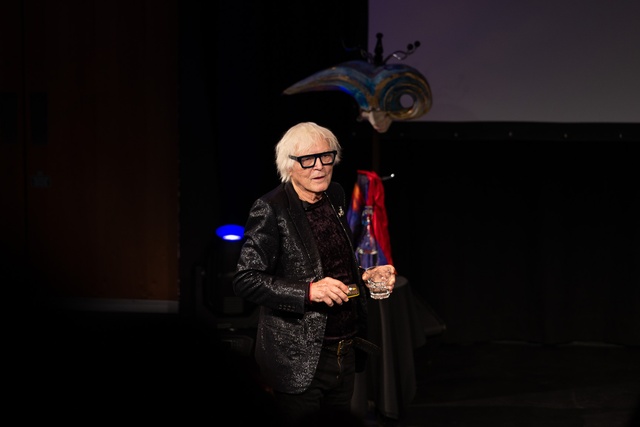
The day ended with the inimitable Australian urban planner David Engwicht, who danced through his introduction dressed as a court jester. Peeling off his garb, he looked more like an aging rockstar. This is the man who brought the world the walking school bus but he’s not happy with how it has evolved — originally dreamt up to give kids freedom from their parents in getting to school, it’s now a highly regulated affair where hands must be held and high-vis must be worn. Engwicht talked largely about creativity and how to unleash it and even teach it. He was provocative and he brought us hope.
And, to be fair, the day was largely about hope and keeping an open mind, being positive, caring for people and planet, and connecting with community. It was undoubtedly unconventional and disruptive but it was also insightful and entertaining. The last word goes to Rademayer, who, when asked where the blue zone is in the Metaverse replied: “It’s most likely offline, perhaps?” Here’s to connection, of the non-digital kind.

